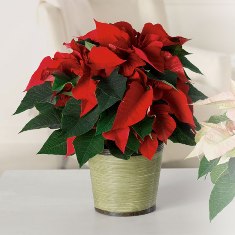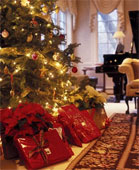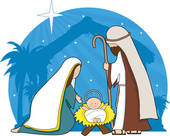
Christmas is a widely celebrated holiday around the world, and it comes with a variety of traditions, facts, and symbols. Here’s a brief overview:
Christmas Traditions:
- Decorating the Christmas Tree: One of the most iconic traditions is decorating a Christmas tree with ornaments, lights, and a tree topper.
- Gift-Giving: Exchanging gifts is a central part of Christmas celebrations. Many people exchange presents on Christmas Eve or Christmas Day.
- Christmas Dinner: Families often gather for a special meal on Christmas Day, which may include roast turkey, ham, or other festive dishes.
- Christmas Carols: Singing Christmas carols is a popular tradition, whether it’s going caroling door-to-door or attending Christmas church services.
- Advent Calendar: Many families use an Advent calendar to count down the days leading up to Christmas, often revealing a small treat or surprise each day.
- Santa Claus and Stockings: Children hang stockings for Santa Claus to fill with gifts. The legend of Santa Claus, a jolly man in a red suit, is based on the historical figure of St. Nicholas.
- Christmas Cards: Sending and receiving Christmas cards is a tradition that allows people to exchange warm wishes and updates with friends and family.
Christmas Facts:
- Date of Christmas: December 25th is widely celebrated as Christmas Day, commemorating the birth of Jesus Christ.
- Origins of Christmas: Christmas has both Christian and pagan origins. The date was chosen to coincide with various winter solstice celebrations.
- Christmas Colors: Red and green are the traditional colors of Christmas. Red symbolizes the blood of Christ, while green represents eternal life.
- Mistletoe: Hanging mistletoe is a tradition that dates back to ancient times. It is often associated with romance, and it is customary for people to kiss under the mistletoe.
- Yule Log: The Yule log is a tradition that originated in medieval times. A large log is burned in the fireplace as a part of the Christmas festivities.
- Poinsettias: Poinsettias are popular Christmas plants. They are native to Mexico and were introduced to the U.S. by Joel Poinsett, the first U.S. Minister to Mexico.
Christmas Symbols:
- Christmas Tree: Symbolizes everlasting life and the promise of new life in the spring.
- Santa Claus: Represents the spirit of giving and generosity. The modern image of Santa Claus is based on various historical figures.
- Reindeer: Santa’s reindeer, particularly Rudolph, are popular symbols of Christmas. The story of Santa’s reindeer is derived from various cultural influences.
- Snowflakes: Represent the winter season and are often used as decorative elements during Christmas.
- Candles: Symbolize light overcoming darkness. Many Christmas traditions involve the lighting of candles.
- Nativity Scene: Depicts the birth of Jesus Christ in Bethlehem and is a significant symbol in Christian celebrations.
It’s important to remember that Christmas traditions and symbols can vary across cultures and regions. These elements contribute to the festive atmosphere and the joyous spirit of the holiday season.
For more on Christmas Traditions read our section on Holidays and Flowers


 The Candy Cane
The Candy Cane

 The Christmas Tree originated in Germany in the 16th century. It was common for the Germanic people to decorate fir trees, both inside and out, with roses, apples, and colored paper. It is believed that Martin Luther, the Protestant reformer, was the first to light a Christmas tree with candles. While coming home one dark winter’s night near Christmas, he was struck with the beauty of the starlight shining through the branches of a small fir tree outside his home. He duplicated the starlight by using candles attached to the branches of his indoor Christmas tree. The Christmas tree was not widely used in Britain until the 19th century. It was brought to America by the Pennsylvania Germans in the 1820’s.
The Christmas Tree originated in Germany in the 16th century. It was common for the Germanic people to decorate fir trees, both inside and out, with roses, apples, and colored paper. It is believed that Martin Luther, the Protestant reformer, was the first to light a Christmas tree with candles. While coming home one dark winter’s night near Christmas, he was struck with the beauty of the starlight shining through the branches of a small fir tree outside his home. He duplicated the starlight by using candles attached to the branches of his indoor Christmas tree. The Christmas tree was not widely used in Britain until the 19th century. It was brought to America by the Pennsylvania Germans in the 1820’s.